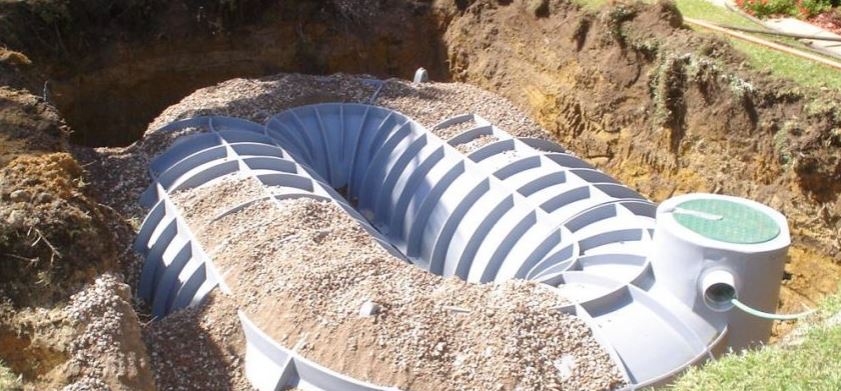People who live in areas with sufficient amounts of rainfall can harvest rainwater for home or commercial use. However, to enjoy all the benefits of rainwater collection you need a water storage tank. What happens if you do not have enough space to place a water tank? The solution is an underground water tank. An underground water tank is buried in the ground and only has a small hatch that opens up above the ground
Types of Underground Water Tanks
There are two main types of underground water tanks; plastic and concrete water tanks.
Plastic Underground Water Tanks
It’s a popular option in residential properties. The type of plastic that is used to manufacture these types of tanks is the long-lasting, food-grade polyethylene that is UV-stabilised. Although it is made from plastic, the water tank is durable and sturdy which enables it to hold a huge capacity of water and not give in to pressure.
The plastic material is lightweight hence it is easy and quick to install. This type of tank is suitable for people who want a quick solution with minimal installation requirements. The only downside to plastic underground tanks is the limit on capacity. The tanks are prefabricated and options on capacity are limited to the manufacturer’s designs.
Concrete Underground Water Tanks
Underground concrete water tanks are built on-site according to the specifications of the owner. A concrete water tank can be as big as you want it to be hence you can fully depend on the water for all of your domestic use. The concrete is strong and can withstand unlimited amounts of pressure when designed well. Concrete is a resistant construction material hence the tanks undergo minimal corrosion and with reinforcement, they can last a lifetime.
Benefits of an Underground Water Tank
- Reduced Flooding
Since most of the water that falls on the roof is directed to the tank, there is a significant reduction in the amount of water that flows to the ground. This reduces flooding in the area around your house.
- Reduced Water Bills
When you harvest rainwater, you can use it for watering your garden, washing the car, in the toilet, doing the laundry and in some cases, even for drinking. This will significantly reduce the amount of water you use from the utility provider hence end up with a reduced water bill. The money you save on water bills can be useful in meeting other household needs.
Points to Note When Harvesting Rain Water
If you intend to use the harvested water for drinking purposes, make sure that your roof, which is the catchment area, is made from suitable materials. Also, there are several contaminants and pollutants around the atmosphere that can pollute the water. Therefore, ensure that you filter the water using suitable filtration techniques to purify the water and make it fit for home use.
When installing an underground water tank, make sure you enlist the services of a qualified plumber that is conversant with your area laws and regulations regarding plumbing requirements. Choose someone with experience and a well-earned reputation. To enjoy the full benefits of an underground tank, installation must be done right. Therefore, don’t take your chances with inexperienced plumbers. A lot goes into installing an underground tank but a lot of benefits are also accrued from having one.
Read Also:
